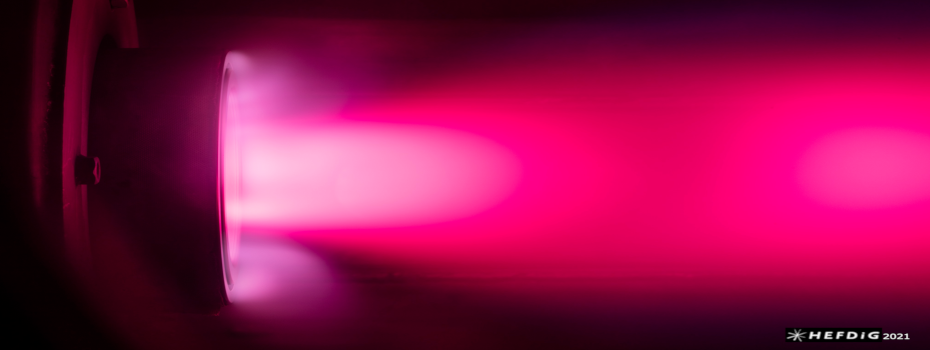Speaker
Description
Background of the study
The development of reentry aerodynamic configurations requires examination of surface heat flux. Reentry-relevant freestream conditions are suitably generated by shock tunnels such as the High Enthalpy Shock Tunnel G{\"o}ttingen (HEG). Surface heating due to radiation at high-enthalpy stagnation conditions has been shown to comprise a significant portion of the total measured surface heat flux on reentry configurations [1,2]. Earlier studies of surface heat flux at or near the stagnation region on blunt sphere-cones [3] and capsules [4] indicated substantial underprediction of surface heating by numerical calculations compared with what was measured in experiments. The conclusion of recent tests in the HIEST at JAXA was that this extra heating component measured in shock tunnel experiments was due to radiation within the shock layer [1]. \\
Previous observations made at the HEG of stagnation point flows have demonstrated fluctuations within the radiating shock layer. The objective of the current experiments is to probe the shock layer and thereby investigate the fluctuations of radiation heat flux within the shock layer. This will be combined with synchronised imaging of the shock front to correlate fluctuations of the shock front geometry with fluctuations in measured heat flux due to shock layer radiation.
Methodology
The HEG will be used to generate reservoir stagnation pressures of approximately 44~$MPa$ and stagnation enthalpies of up to 12 $MJ/kg$. A flat-faced cylindrical probe has been designed to generate a bow shock layer upstream of the model face. The probe houses an array of surface-mounted sensors including a radiative heat flux sensor, pressure sensors, temperature sensors, and fibre optic components for measurements within the shock layer.\\
Preliminary studies and in-situ calibration of the radiative heat flux sensor with a measurement frequency range on the order of 1 $MHz$ will be described. This sensor will thereby enable fast-response measurement of radiation heat flux fluctuations within the shock layer, for a given transmission wavelength band. This will be complemented by fast-response pressure measurements in the stagnation region. Furthermore, installation points for fibre optic cables are available which enables calibrated in-situ emission spectroscopy measurements for further insight into shock-layer radiation and comparisons with similar measurements of the freestream flow. \\
Optical diagnostics include high-speed schlieren for imaging the shock front and assessing fluctuations within the shock layer.
Results
Preliminary results of the measurement campaign will be presented. The focus will be on the time-resolved measurement of radiation heat flux within a specific transmission wavelength band. The use of the radiation heat flux sensor for shock layer heat flux fluctuations in the $\mathcal{O}(MHz)$ frequency range will be additionally demonstrated. The synchronisation of these measurements with high-speed schlieren images of the shock front will be elaborated.
Conclusion
The full presentation will discuss the applicability of the above-mentioned methods to the development of fast-response measurements of radiation heat flux within the shock layer.
References
[1] H. Tanno, T. Komuro, R. P. Lillard, and J. Olejniczak, “Experimental study
of high-enthalpy heat flux augmentation in shock tunnels,” Journal of Thermophysics and Heat Transfer, vol. 29, pp. 858–862, Oct 2015.´
[2] B. A. Cruden, C. Y. Tang, J. Olejniczak, A. J. Amar, and H. Tanno, “Characterization of radiative heating anomaly in high enthalpy shock tunnels,”
Experiments in Fluids, vol. 62, Jun 2021.
[3] B. R. Hollis and D. K. Prabhu, “Assessment of laminar, convective aeroheating prediction uncertainties for mars-entry vehicles,” Journal of Spacecraft
and Rockets, vol. 50, pp. 56–68, Jan 2013.
[4] E. Marineau, D. Lewis, M. Smith, J. Lafferty, M. White, and A. Amar, “Investigation of hypersonic laminar heating augmentation in the stagnation
region,” in 51st AIAA Aerospace Sciences Meeting including the New Horizons Forum and Aerospace Exposition, American Institute of Aeronautics
and Astronautics, Jan 2013.
Summary
The experimental setup for fast-response shock layer radiation measuements in a shock tunnel will be discussed.

